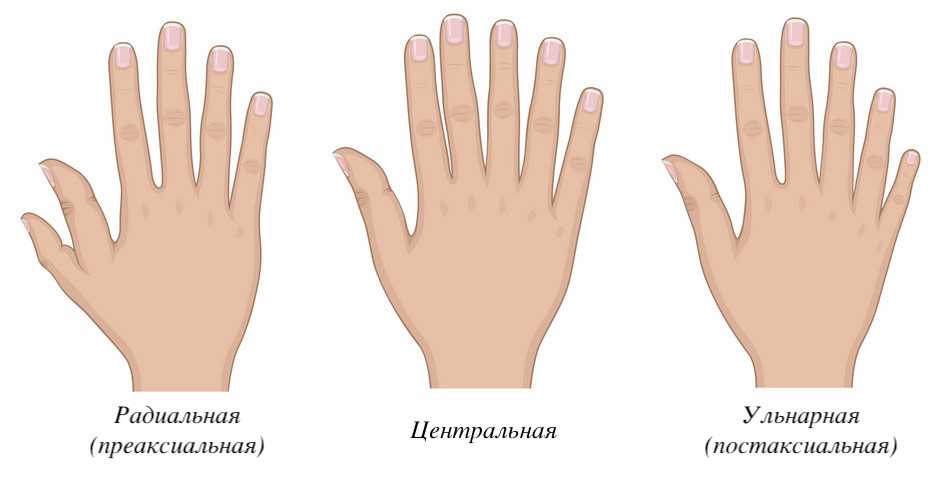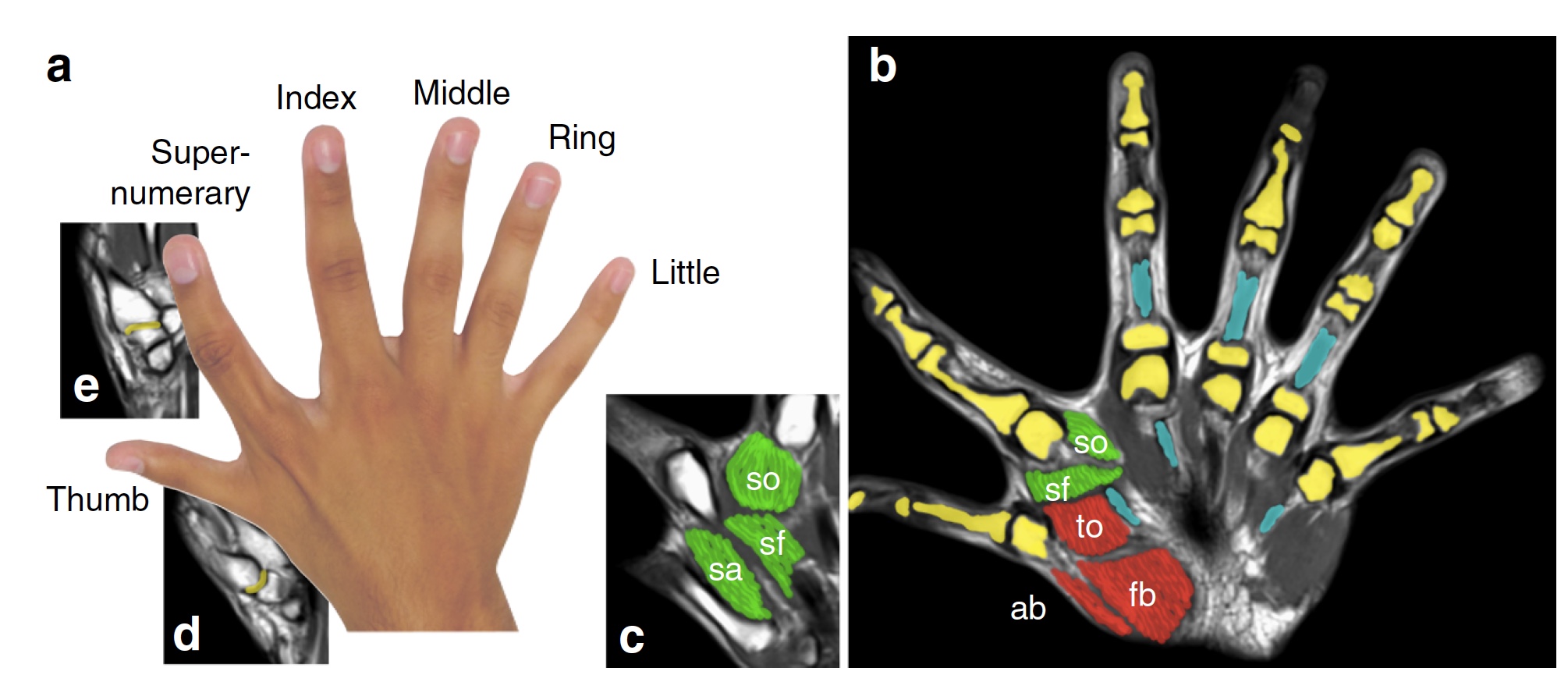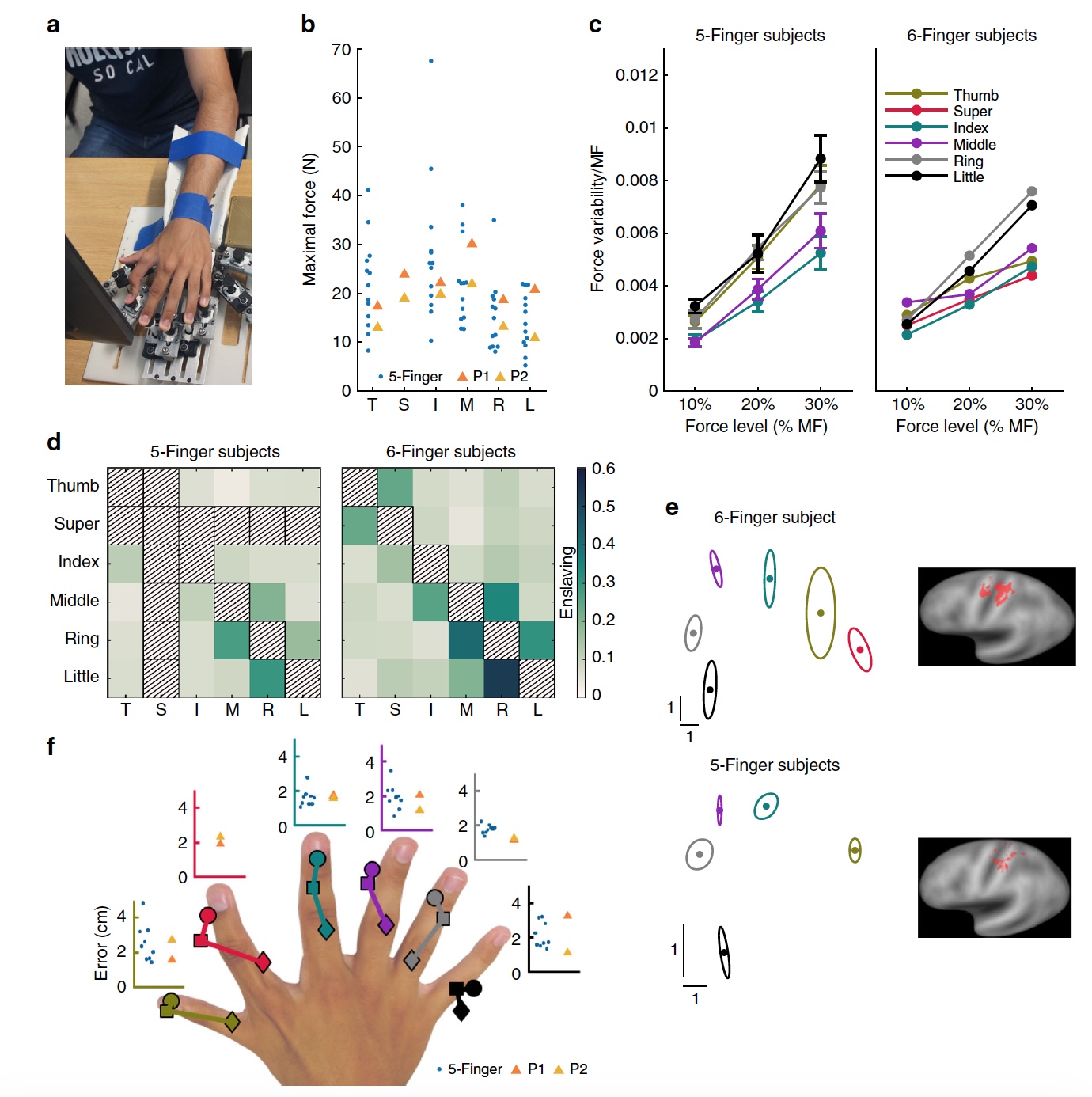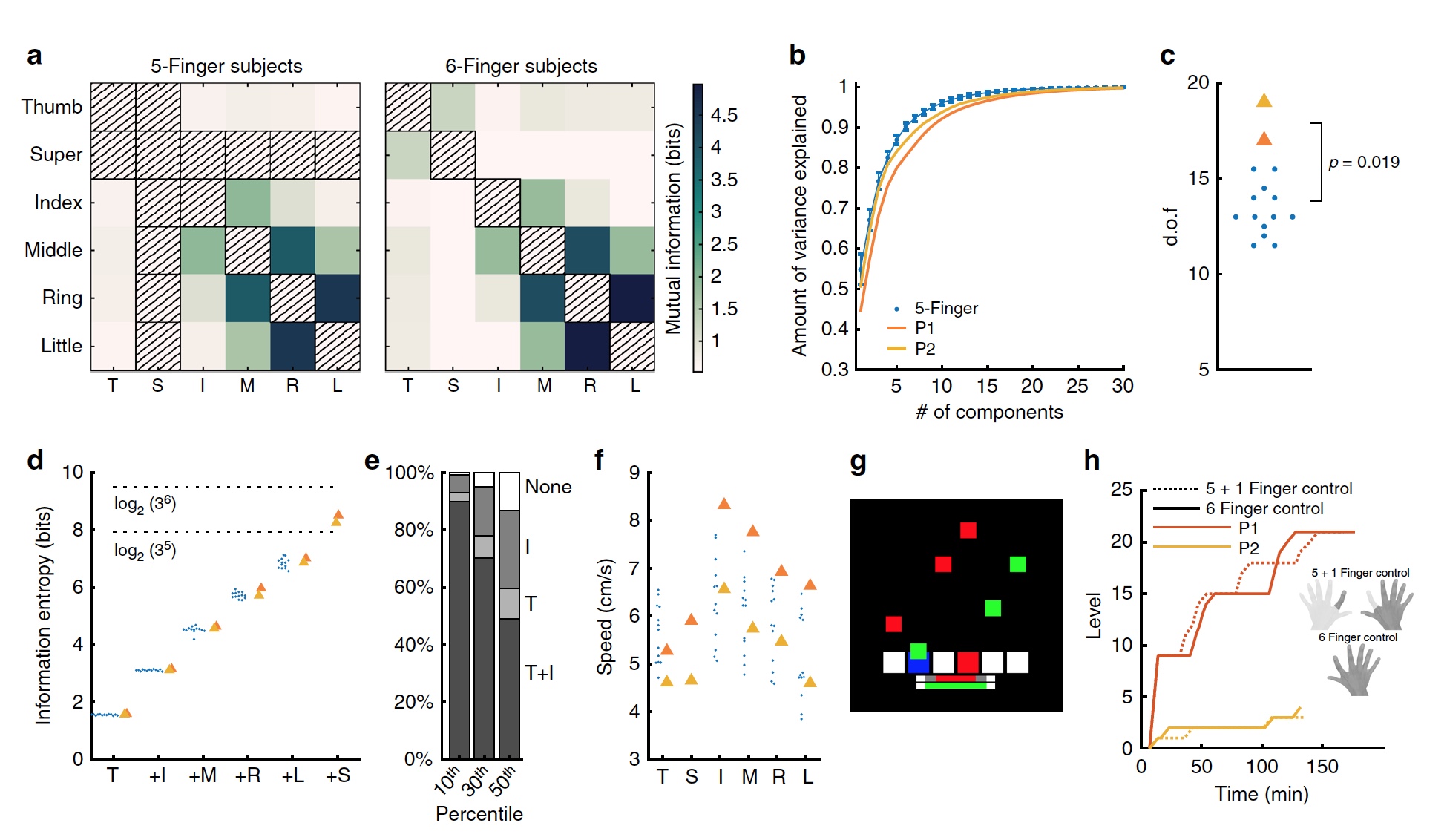Not a bug, but a feature: a study of the motility and brain activity of a person with polydactyly

The human body can be compared with a very complex mechanism consisting of many separate systems that work in a coordinated and timely manner to ensure vital functions. You can compare it with a program consisting of thousands of lines of code, each of which performs certain functions. But, and programmers will not let me lie, there are often errors or inaccuracies in the code. Some lead to the inoperability of the program or its individual functions, while others become an unexpected feature that complements the program.
Today we will get to know a study in which scientists decided to examine in detail the motor and neuromechanics of a person whose program has an extra line of code - a full sixth finger on each hand. Can such a deviation be considered functionally useful, do such people have advantages in motor skills, and what ideas did the researchers have in the field of prosthetics? We will find answers to these questions in the report of scientists. Go.
Study basis
First of all, it is worth briefly considering what is polydactyly. As we have already understood, this term means the presence in a person or animal (more often in dogs and cats) of additional fingers on his hands and / or feet. This anatomical abnormality is hereditary. About 2% of newborn babies are born with an extra finger, 10% of them have an extra finger on their upper limbs. Scientists have found that polydactyly begins to actively develop within 4 weeks of embryo development, when active limb growth occurs. The main source of polydactyly are genetic mutations. At the moment, there are about 39 such mutations associated with the formation of extra fingers. There are also many syndromes of disorders of the musculoskeletal system, the symptoms of which include polydactyly.

The simplified classification of polydactyly has 3 main categories depending on the location of the extra finger:
- radial (preaxial): doubling the segments of the first finger;
- central: doubling of the second or fourth fingers;
- ulnar (postaxial): doubling the fifth finger.
In addition to the location, polydactyly is also divided into categories according to the structure of the extra finger / fingers:
- type 1 polydactyly: extra fingers are rudimentary and consist exclusively of skin;
- polydactyly type 2: extra fingers are a branch of the main;
- polydactyly type 3: extra fingers are full (bone structure, nerves, joints, blood flow, skin, etc.).
In the study we are considering today, 2 people took part (a 17-year-old guy and his 52-year-old mother) who have polydactyly of the third type (6 full fingers on both hands).
Scientists have set themselves a number of questions that no one had really tried to find answers to before: how well the human brain can handle extra fingers; whether the extra finger works with the muscles and nerves of the core or fully uses its own; how independent the extra finger is; how does the body of the holder of the 6th finger react to its activity and is there any additional benefit from the 6th finger? There are many questions, there are no answers at all, but not for long.
Demonstration of the hands of a guy of 17 years who took part in the study.
Looking ahead, it is safe to say that the brain and nervous system as a whole do an excellent job managing 6 limbs. In addition, these extra fingers allow their owners to perform certain tasks with one hand when a person with 5 fingers needs two, and two when a person with 5 fingers needs three hands. In other words, our nervous system is very smart, excuse me for gross exaggeration. Our brain can control the extra fingers without much effort, and this leads scientists to think about prostheses that complement full limbs. It sounds very futuristic and even a little strange, but scientists have a number of material evidence of both the ability of the brain and the benefits of extra fingers.
Research results

Image No. 1: the young man’s extra finger is between the thumb and forefinger.
First of all, the researchers decided to find out which muscles and nerves are involved in the motor skills of the 6th finger.
As we see in the picture of the right hand, the thumb has 2 phalanges, the other five - three phalanges ( 1a , 1b ). It is also seen that the anatomy of four fingers (index, middle, ring and little fingers) of the study participant is similar to human anatomy without polydactyly. The vascular and nervous structures of the participant’s thumb are the same as in a person without polydactyly.
Differences are in the joints of the thumb. The carpal-metacarpal joint of the thumb has a spherical appearance ( 1d) with three degrees of freedom, including torsion, while in the usual case, the wrist-metacarpal joint of the thumb is a saddle that does not allow torsion. The extra finger (hereinafter PD) has a saddle-shaped joint ( 1e ), two external flexor tendons and one internal extensor apparatus ( 1c ), and additional digital nerves.
Summing up, this six-finger hand is controlled by more muscles and nerves than the five-finger hand. That is, the extra finger has “allocated” muscles and nerves, and it does not use neighboring main fingers for motility.

Image No. 2
Further, the researchers conducted an analysis of the biomechanical characteristics of the fingers using a special device that allows one to evaluate the pressing force of a finger ( 2a ).
Performing a finger strength test.
Tests showed that the strength of all fingers in participants with 6th and 5th fingers is almost identical ( 2b ). Charts 2c show a comparison of the strength of a person’s fingers with 6 fingers and a person with five fingers. In addition to the total strength and strength of individual fingers, scientists analyzed an indicator such as interdependence, when one finger acts under the direction of the other (try to bend only the ring finger, and see what other fingers will begin to bend a little). This test allowed us to evaluate the degree of independence of the extra finger ( 2d) The analysis showed almost complete independence, but a slight cooperation of the extra and thumb was found. Other fingers had the same addiction as people with five fingers.
Demonstration of independence of the extra finger.
After these tests, an MRI scan of the motor cortex of the brain (the test participant tapped with a certain finger) was performed to determine the activity of certain areas with the activity of a finger.
Comparison of the activity of the motor cortex showed that the activity of the extra finger in the primary sensorimotor cortical layers differs from all other fingers and even the thumb ( 2e ). Thus, it was proved that the selected area of the motor cortex controls the DP motility.
The next test was even more curious. One arm was covered with a graduated grid. In response to a tactile signal (touching a hidden hand), the subjects should indicate the corresponding touch points on the second hand. This test can be easily repeated at home: hide one hand (for example, the left) and let someone with a pencil or pen lightly touch the tip of the index finger or any other point, and you should, looking at your right hand, tell where the touch was . Such a test allows you to determine how mentally a person is aware and represents his body and its parts.
Figure 2f shows that the subjects are fully aware of all their fingers and perceive the position of the extra finger between the thumb and forefinger.
Researchers also conducted more practical tests in which participants had to interact with various subjects or perform some ordinary actions. Thus, it was possible to determine the degree of advantages or disadvantages of having an additional finger.
Checking the motility of the right hand with six fingers No. 1.
Checking the motility of the right hand with six fingers No. 2.
An accurate motion capture system was used to record the movements of the distal and proximal phalanges of each finger. The same interdependencies between finger movements ( 3a ) were found as in the previous biomechanical test, suggesting that the mobility and independence of the DP do not decrease during the manipulation.

Image No. 3 The
interdependencies between finger movements strongly correlated between five-fingered and six-fingered hands for all fingers except the extra. That is, the extra finger is completely individual and independent.
A study of the kinematic synergy of fingers showed that movements of six-fingered hands have a greater degree of freedom than that of five-fingered hands ( 3b, 3c ). These results were confirmed by information-theoretic analysis taking into account nonlinear relationships ( 3d ). It turns out that the maximum entropy (variability) of hand movements with six fingers is significantly higher than with five fingers.
Scientists also note that during the tests the extra finger moved in coordination with the thumb and forefinger together, and not with each of them individually, or on its own ( 3e ).
From these observations, it follows that the independence of the extra finger is not a replacement for the index finger or thumb, but a manifestation of a unique model of movement. In other words, these tests once again confirmed the usefulness of the motility of the extra finger. In addition, the speed of motility ( 3f ) of the six-fingered hand, which was not inferior to the speed of a hand with five fingers, is also an additional confirmation of this statement .
In the end, scientists decided to play Guitar Hero, or rather something similar. Participants had to press the keys with one finger (a separate key corresponded to each finger) when a red rectangle falls into a white field ( 3g) The speed of movement of the rectangles gradually increased with each level of the "game". The time of one level was 2 minutes. After the successful completion of one level, the next, but more difficult, began.
Test with keys.
The most interesting thing is the preparation for this test: for 5 days, participants practiced using one right hand (all 6 fingers) or the right hand (5 fingers) + 1 finger of the left hand ( 3h ).
As a result, the success of passing levels in both versions (1 arm / 6 fingers and 2 arms / 5 + 1) was identical, which, according to scientists, proves the actual advantage of 6 fingers.
Usual everyday affairs (tying shoelaces, typing and some video games) performed by a guy with polydacty.
For a more detailed acquaintance with the nuances of the study, I recommend that you look into the report of scientists and additional materials to it.
Epilogue
This study may seem a little frivolous, but it answers a number of questions that no one wanted to ask before. Firstly, now we know for sure that our brain is able to quite successfully cope with the motility of additional extremities, which should not be. Secondly, some anatomical abnormalities may have additional benefits. Thirdly, I would not play Mortal Kombat with a 17-year-old research participant.
Of course, the results of this work do not mean that all anatomical anomalies can have positive sides, and they cannot be eliminated at the earliest stages of manifestation. Many people who have been diagnosed with polydactyly broke up with her in infancy. And this is the right decision. At the same time, one cannot condemn the desire of scientists to understand the principles of the brain and the motor skills of people’s hands in which extra fingers belong to the third type of polydactyly, that is, fully formed and full fingers.
The researchers themselves are very enthusiastic about their work and argue that its results can push the scientific community to start developing complementary prostheses that will be used not as a replacement for an absent limb, but as an additional one. Something similar was already in the movie "Spider-Man 2" (2004), is not it. It is hoped that the additional limbs will not drive the wearer crazy, and he will not begin to carry out deadly experiments with tritium.
In any case, we can agree on one thing - no matter what a person has physical disabilities, he remains a person.
Friday off-top:
A small BBC story about a family, all members of which have six fingers on each hand. And this does not prevent them from being a happy, friendly and very positively-minded family.
Thank you for your attention, stay curious and have a great weekend everyone, guys! :)
A small BBC story about a family, all members of which have six fingers on each hand. And this does not prevent them from being a happy, friendly and very positively-minded family.
Thank you for your attention, stay curious and have a great weekend everyone, guys! :)
Thank you for staying with us. Do you like our articles? Want to see more interesting materials? Support us by placing an order or recommending it to your friends, a 30% discount for Habr users on a unique analogue of entry-level servers that we invented for you: The whole truth about VPS (KVM) E5-2650 v4 (6 Cores) 10GB DDR4 240GB SSD 1Gbps from $ 20 or how to divide the server? (options are available with RAID1 and RAID10, up to 24 cores and up to 40GB DDR4).
Dell R730xd 2 times cheaper? Only we have 2 x Intel TetraDeca-Core Xeon 2x E5-2697v3 2.6GHz 14C 64GB DDR4 4x960GB SSD 1Gbps 100 TV from $ 199 in the Netherlands! Dell R420 - 2x E5-2430 2.2Ghz 6C 128GB DDR3 2x960GB SSD 1Gbps 100TB - from $ 99! Read aboutHow to build the infrastructure of the building. class using Dell R730xd E5-2650 v4 servers costing 9,000 euros for a penny?
